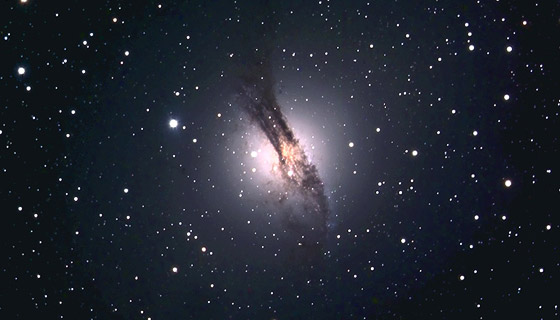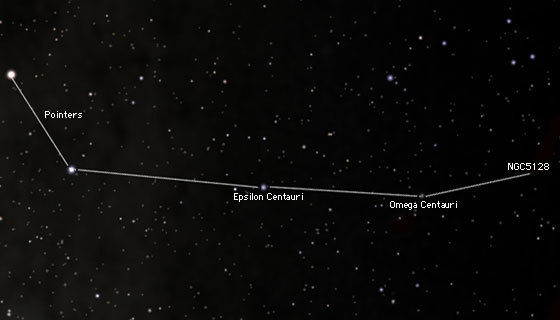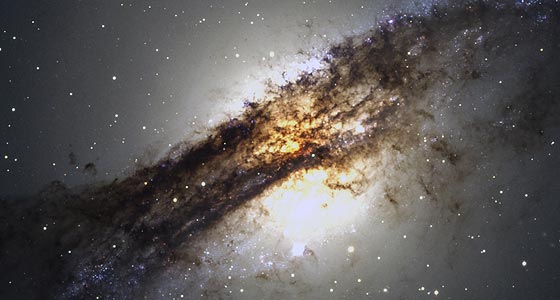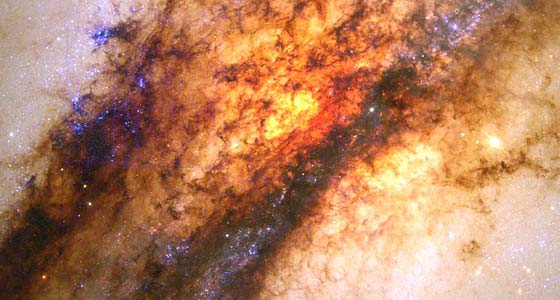
Discuss (Up to OJB's Favourites Page) NGC 5128NGC5128 is a spectacular giant elliptical galaxy (type E0) in Centaurus. The radio source associated with this object (which is 50 million times stronger than our galaxy's radio emission) is called Centaurus A (occasionally the visual galaxy is also known as this). It also shines strongly in the x-ray area of the spectrum. A conspicuous dark dusty bar crosses the middle. The galaxy has an apparent size of about 18 x 14 arc minutes - other estimates vary from 5 to 27 minutes or arc across! NGS5128 is bisected by the 1 minute wide dark bar (its true width is 15000 light years). The distance is about 15 million light years. NGC5128 is easy to find, near the globular Omega Centauri. Its visual brightness estimates vary from 7.6 to magnitude 6.8. It is easily visible in binoculars with a dark sky, and some detail is visible in a 20 cm (8 inch) reflector. Its exact position is right ascension 13h 25m 42s, declination -43.0376°. 
Above I have attempted to show what the galaxy looks like with varying size telescopes. First is the view in binoculars, just a fuzzy, round "blob". Next, a small telescope shows some signs of structure, especially the dark band. Finally a larger telescope (around 14 inches, 36 cm) shows much more detail in the dark band and some brighter areas and foreground stars. 
This is how to find the galaxy. First learn how to find Omega Centauri. Use the two bright pointers (Alpha and Beta Centauri, and the third star, Epsilon) to establish a line which points to Omega Centauri (NGC 5139, a bright globular cluster). After you have found this easy object move along a bit further and divert slightly off the line to find NGC 5128. You should be able to find Omega Centauri without any optical aid but you will need binoculars to find the galaxy. The distance from Omega is about one typical binocular field (you should be able to just see both at the same time but it will depend on the magnification of the binoculars). 
This magnificent photo was taken at the European Southern Observatory. Its the best image of this galaxy I have seen from an Earth-based telescope. There's a lot of amazing detail in the dark bar. The ESO is run by 11 European countries and is headquartered in Garching, near Munich, Germany. It operates major observatories in Chile at Cerro Paranal (including 4 8.2 meter telescopes) and La Silla. 
This image shows the core of the galaxy and was taken from the Hubble Space Telescope. The HST has provided us with the most beautiful images of deep sky objects (as well as performing the less glamorous task of collecting valuable data for research) and this one is no exception! |
![[Up]](../XuShared/Up2B.jpeg)
![[Comment]](../XuShared/Comment2B.jpeg)
Comment on this page: Very Useful • Quite Useful • Useless or: View Results |
||||||||||||